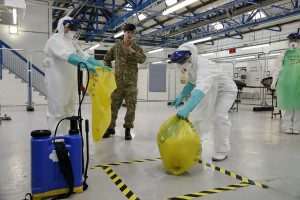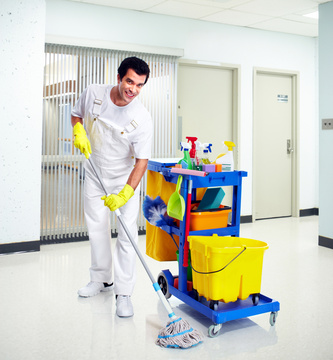The Procedure for Biohazard and Crime Scene Cleanup

Disposing biohazard materialsBiohazard materials are substances that pose a risk to human... More at the proper facility.
Hopefully you will never have to deal with a trauma or crime scene on your property but of course, nothing is guaranteed. Serious accidents and violent crimes are daily occurrences throughout the U.S. and they always happen unexpectedly. Finding such a scene on your property is very difficult emotionally, and extremely dangerous for your health. Biohazard materialsBiohazard materials are substances that pose a risk to human... More, such as blood and other potentially infectious substances, contain harmful toxins that can spread infectionInfection is the invasion and multiplication of harmful micr... More. You must avoid contact with any biohazard materialsBiohazard materials are substances that pose a risk to human... More and call the proper authorities immediately to respond to the scene.
Unfortunately, the police and EMTs do not clean up crime scenes containing biohazard materialsBiohazard materials are substances that pose a risk to human... More. You are responsible for the cleaning and restorationRestoration is the process of returning a property to its pr... More of your own property. Professional crime scene cleaners safely restore crime and trauma scenes, and they can also remove and dispose of biohazard materialsBiohazard materials are substances that pose a risk to human... More. Removing the physical evidence of the tragedy is a very important first step towards recovery. You can rest assured that professional crime scene cleaners will safely clean and sanitize the scene with the following procedure.
Initial Inspection
When the biohazard cleanup professionals first arrive, they evaluate the scene to determine the following:
- Which disinfectants to use depending on the type and amount of biohazard materialsBiohazard materials are substances that pose a risk to human... More.
- Which materials at the scene to consider dangerous biohazard materialsBiohazard materials are substances that pose a risk to human... More.
- How to transport and dispose of the biohazard materialsBiohazard materials are substances that pose a risk to human... More.
Biohazard cleaning professionals use several EPA registered and hospital grade cleaners to completely remove all traces of biohazard materialsBiohazard materials are substances that pose a risk to human... More. These cleaners typically include:
- EPA registered tuberculocidal disinfectants
- EPA registered disinfectants known to be effective against HIV and HBV
- Diluted bleach solutions
- FDA approved sterilants and disinfectants
Disposal of Biohazard Materials
The entire biohazard cleanup process consists of two main phases; restorationRestoration is the process of returning a property to its pr... More of the scene and disposal of the biohazard materialsBiohazard materials are substances that pose a risk to human... More. Biohazard materialsBiohazard materials are substances that pose a risk to human... More generally consist of the following:
- Blood, tissues, bodily fluids, and other potentially infectious materials (OPIM)
- Objects contaminated with biohazard materialsBiohazard materials are substances that pose a risk to human... More that could potentially spread infectionInfection is the invasion and multiplication of harmful micr... More
Biohazard cleanup professionals transport biohazard materialsBiohazard materials are substances that pose a risk to human... More in safe containers to a medical waste facility that is equipped and licensed for proper disposal. The containers used to transport biohazard materialsBiohazard materials are substances that pose a risk to human... More must meet the following criteria:
- Sealable to prevent spills
- Built to prevent leakage during the storage, transportation, and handling
- Properly labeled per regulatory protocol
Discovering a trauma scene on your property involving biohazard materialsBiohazard materials are substances that pose a risk to human... More leaves you feeling helpless without knowing what to do next. Once you call the right authorities, you must get in touch with crime scene cleanup professionals immediately. These professionals effectively remove biohazard materialsBiohazard materials are substances that pose a risk to human... More and fully restore the scene to protect your safety and help you begin your recovery. You can trust biohazard cleaning professionals to get your home or business back to a safe condition with the procedure described above.












